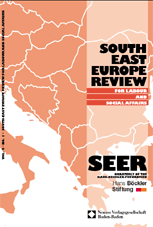Industrial conflict in Slovenia
Industrial conflict in Slovenia
Author(s): Miroslav Stanojević, Pavle VrhovecSubject(s): Politics / Political Sciences
Published by: Nomos Verlag
Keywords: strikes in Slovenia; Slovenian trade unions; Unemployment in Slovenia;
Summary/Abstract: The key features of the Slovenian institutions of industrial relations are a high degree of centralisation in collective bargaining, a high level of coverage of collective agreements and a co-determination system based on the German model. These features make the Slovenian industrial relations system very similar to some highly regulated European market economies. An additional key feature of such highly regulated market economies is the relatively low frequency of strikes. In this article, we intend to establish whether, at this specific point, Slovenia is approaching the ‘Rhine model’ (Albert, 1993) – i.e. the systems of highly regulated market economies. Summary: In spite of some macro regulations, the regulation of work in Slovenia is focused on the micro level. Unemployment has disciplined the most exposed groups of less skilled and unskilled workers. This form of pressure, combined with that of competition from other commodity markets, has induced in Slovenia internal integration, i.e. the transformation of industrial democracy into coalitions of ‘job owners’
Journal: SEER - South-East Europe Review for Labour and Social Affairs
- Issue Year: 2001
- Issue No: 01
- Page Range: 29-37
- Page Count: 9
- Language: English

